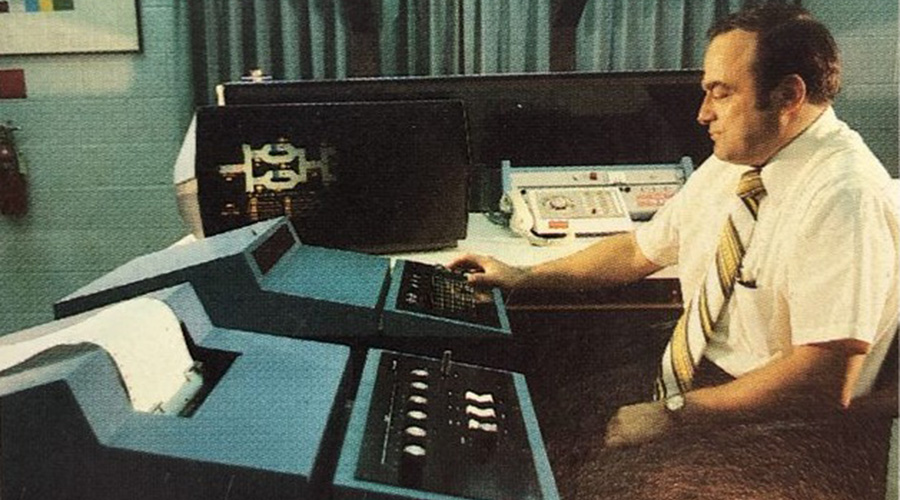Success Stories From the New Workplace
Workplace design can provide a competitive advantage. Here are best practices drawn from workplaces that work
After years of focusing on cutting the cost of space and making it as efficient as possible, there is not much left to squeeze. However, savvy facility executives are learning that a high-performance workplace can make a significant contribution to boosting productivity, improving profitability and creating a competitive edge. To achieve this exceptional performance, facility executives are finding they must shift their focus from the space their people occupy to the nature of the work their people do and how they can support it most effectively.
This new focus is crucial in today’s business world. Many organizations are changing the way internal services are provided and delivered. Many nonrevenue-producing departments are no longer allowed to operate as cost centers; instead, they are forced to act like business units with increased accountability for serving internal customers and adding value to the bottom line. Many commercial real estate and facilities organizations are being asked to respond more powerfully to their internal customers by providing them the space and tools that will enable them to achieve strategic business objectives and will support the way employees work. This is very different and more valuable than simply providing efficient places to work.
Consider Capital One. Like many companies, Capital One competes to attract and retain top talent. The commercial real estate group supports this effort by providing ancillary services and amenities to enhance its service to employees. This helps demonstrate Capital One’s commitment to a better work/life balance. The company also planned and implemented vibrant work environments that are flexible and collaborative. The combination of a high-energy atmosphere, amenities and ancillary services has enhanced Capital One’s recruiting and retention efforts. This is reflected by its inclusion in Fortune’s list of “Best 100 Companies To Work For.”
New Ways of Working
Because of evolving business processes and rapid changes in technology, the way people work is changing. Work has become much more knowledge-intensive, collaborative and immediate. Fast access to other people is critical, but now work is enabled by resources such as equipment, space, technology and protocols so it’s not so place-dependent. The workplace is not just about cubes or offices. It is about the appropriate combinations of space, protocols, technology and tools that support the nature of work and keep employees productive, satisfied and loyal.
To be successful, corporate real estate and facility executives need to be conversant with key aspects of the nature of their customers’ work and how the workplace can support it. They need to understand what, where, how, when and with whom work gets done.
A good example of the importance of understanding the needs of internal customers comes from Hewlett-Packard. That company was experiencing a high rate of organizational change at one of its research and development facilities, and the resulting 300 percent churn rate was interfering with the productivity of employees.
Part of the solution was to anticipate change through increased involvement with its internal customers. In addition, HP developed a flexible workplace that would enable frequent moves; the new universal plan has fewer space standards, facilitating quick and easy employee moves without major furniture reconfigurations. Move time was reduced from an average of 11 hours to 3, resulting in an estimated productivity savings of 48,000 to 72,000 hours per year.
Primary elements to explore in a high-performance workplace include:
- Collaboration: supporting the need for people to strategize, plan, solve problems, innovate and communicate with each other in a variety of settings that can accommodate spontaneous as well as scheduled interactions.
- Privacy: enabling employees to concentrate and focus, as well as meeting confidentiality and security requirements.
- Mobility: providing tools and policies to work anywhere, anytime, based on the individual’s needs and job functions.
- Anchors: understanding the key elements essential for the performance of one’s work. These differ from work process to work process; examples include labs, people, laptops, cell phones and files.
- Acoustics: providing the right kind of acoustic design to minimize distractions that affect productivity.
Another challenge for corporate real estate and facility executives is to measure and monitor the impact of workplace strategies on performance. Many measures go beyond the traditional metrics of capital and operational costs routinely tracked by corporate real estate organizations and finance groups. There are measures related to business performance that require input from business units, human resources, information technology and finance. For example, HR can provide the costs and benefits associated with employee attraction, retention and absenteeism. Business units can provide parameters/metrics for measuring customer satisfaction and employee productivity.
A classic example of the benefits of measuring the productivity impact of facility changes comes from West Bend Mutual Insurance. The company set out to improve productivity by enhancing the comfort and quality of the office environment while reducing construction and energy costs. Its strategy included providing HVAC and other environmental controls at each individual workstation. West Bend’s documented results were dramatic: Measured productivity gains paid for the workstations within 18 months; hot/cold complaints were virtually eliminated; productivity increased by 16 percent; there was a sizable decrease in energy consumption; and utility costs dropped.
Integration Is Key
In any kind of performance/productivity-enhancing initiative, the goal is not to get people to work harder or longer, but to work smarter, more effectively and more efficiently. This requires an integrated approach to workplace-making, which includes:
- A multidisciplinary team including, but not limited to, corporate real estate, facilities, finance, information technology, human resources, quality assurance, key business units and senior leadership representatives to link strategic business objectives to workplace strategies and performance metrics that can ultimately be used to measure the impact of workplace on productivity.
- Organizational policies supporting new ways of working, managing, measuring and communicating performance — at the individual, team, department, business unit and leadership levels.
- A technology plan for hardware, software and policies that support business strategies and the nature of work.
Some early attempts at using the workplace to increase productivity have been less than successful but provide solid lessons learned. An interesting case is the experiment by innovative advertising agency Chiat/Day in the mid ‘90s. In Wired magazine, Warren Berger reported that the firm created a workplace with no dedicated, assigned space or equipment for its employees, based on the assumption that people were largely mobile and virtual and not often in the office. Unfortunately, many people needed space to meet, work on layouts, plan and design; many needed computers and telephones — and many needed these things all at the same time. Employees resorted to squatting, turf wars and equipment hoarding. Chaos reigned and productivity plummeted. One senior manager dealt with the situation this way: “Damned if I was going to get up at 6 a.m. to get a phone. I had to put my foot down. I told my assistant, ‘You go in there at 6 in the morning, get me a phone and computer, and hide it till I get there!’”
Fortunately, research, testing and the lessons learned by pioneers like Chiat/Day have led to the development of other productivity-boosting strategies. These include:
- A wider range of work settings, both enclosed and open, to support all facets of work, from teaming clusters to focused, heads-down spaces.
- Spaces that encourage informal, spontaneous interaction as well as formal, scheduled collaboration.
- Flexible work settings and furniture components that support changing teams and work modes.
- Opportunities for input by users before, during and after workplace changes.
- Space designed to enhance the organization’s brand through the incorporation of graphics and architectural design features that express company image, values and mission.
Healthy, “green,” sustainable workplaces and practices.
- Spaces designed to stimulate creativity and innovation.
- User customization to facilitate adaptation of team needs and limited personal preferences.
- Organization and zoning of space into “neighborhoods” that reinforce teams, separate noisy from quiet areas and provide opportunities for spontaneous collision and collaboration.
The bottom line is that high-performance workplace design can dramatically boost productivity.
The U.S. General Services Administration has addressed several of these strategies in its Adaptable Workplace Lab, a prototypical project to address worker comfort, improve air quality and reduce churn costs. The initiative was driven by internal organizational and technology changes as well as a federal mandate to provide healthy, sustainable work environments. The project team created flexible infrastructure and furnishings to accommodate frequent change. The design also incorporated sustainable practices that address thermal comfort, better indoor air quality and lower energy costs.
One significant result is an increased ability to rapidly reconfigure space that has resulted in a 90 percent reduction in churn costs and an attendant increase in productivity for staff. The GSA can now also provide a more comfortable environment while reducing operating costs for heating and cooling.
The companies that have made high-performance workplace strategies succeed have learned several key lessons. One is that the priority focus must be on people and their work process, not simply space. Work is becoming more collaborative and less place-dependent; workplace-making is about the appropriate holistic integration of people, process, place, tools and technology to enable work anywhere and anytime. To achieve that goal, an integrated workplace-making team is essential. Successful strategies focus on fast delivery, modularity, flexibility and the ability to accommodate change readily. It’s crucial to realize that new possibilities don’t immediately translate into widely accepted practices; acceptance for telework, team clusters, virtual work strategies and other approaches takes time. Training and managing expectations are critical to the success and rate of adoption of any innovation or workplace change. So are robust change-management strategies. Finally, workplace strategies need to link back to business objectives and be measured by the value they provide.
Jim Rice and Susan Mitchell-Ketzes are consultants on alternative work strategies, high-performance work environments and change management. Both are employed by the Atlanta office of HOK Consulting, which provides strategy and planning services for real estate and facility executives.
Nortel Networks: New Ways of Working
Nortel Networks initiated a significant global program with a team of several outsource partners to increase productivity, reduce “time-to-market,” improve employee satisfaction and reduce turnover while decreasing real estate costs. Workplace environments were created to enable people to work together smarter and faster by increasing the frequency and amount of collaboration, as well as providing a menu of spaces designed to support focused, private work. To improve employee satisfaction and well being, planning guidelines stressed the need for access to daylight and views for all employees. Mass customization was key, providing users with choices for work settings and productivity tools based on the specific nature of their work. Key results:
- 94 percent of employees reported a 15 to 20 percent gain in productivity
- Time-to-market for some products improved 16 to 20 percent.
- Employee satisfaction increased by an average of 35 percent.
- Attraction and retention improved by an average of 22 percent.
General Services Administration: Office of the future
The U.S. General Services Administration’s Seattle Regional Office wanted to improve communication across business units, make senior leaders more accessible to associates and provide a workplace that supports the nature of GSA’s work. The office integrates key workplace elements of space, technology and protocols. Senior leaders from each business unit were collocated in workstations and team clusters with their associates and peers to increase opportunities for communication and interaction. Space was reallocated to provide more teaming/collaborative areas as well as a number of unassigned enclosed spaces for concentrated work. Significant results reported include better communication among business units, more collaboration within work groups, and a successful cultural shift and alignment with GSA’s strategic business goals.
Performance Measures
Direct/Quantitative Measures
- Number of widgets produced
- Lines of error-free code
- Volume of calls answered
- On budget
- On time
- Square foot per person
- Costs per person
- Costs as a percent of revenue
- Time to market
- Number of workplace-related employee complaints
- Employee turnover
Indirect/Qualitative Measures
- Overall employee satisfaction
- Customer satisfaction
- Employee productivity
- Satisfaction with workplace
- Degree to which the environment facilitates the ability to work
Creating workplaces that Perform
Creating a high-performance workplace takes more than just making changes to physical space. To make the right changes — those that will affect profitability and productivity and maximize resources — requires understanding the nature of employees’ work and what those employees need to accomplish their tasks.
Here are some key steps to achieving high-performance workplaces:
- Explore and understand the variety of work processes that get the company’s business done.
- Study the key attributes of the nature of work that have facility implications: Take a special look at collaboration, privacy, anchors and mobility.
- Define how success and performance are measured.
- Create and implement holistic strategies to support employees and the nature of their work.
- Measure, report and recalibrate the workplace strategies to achieve maximum impact.
Related Topics:











